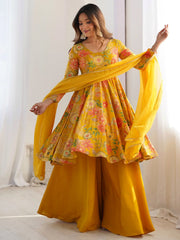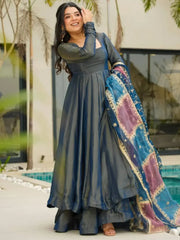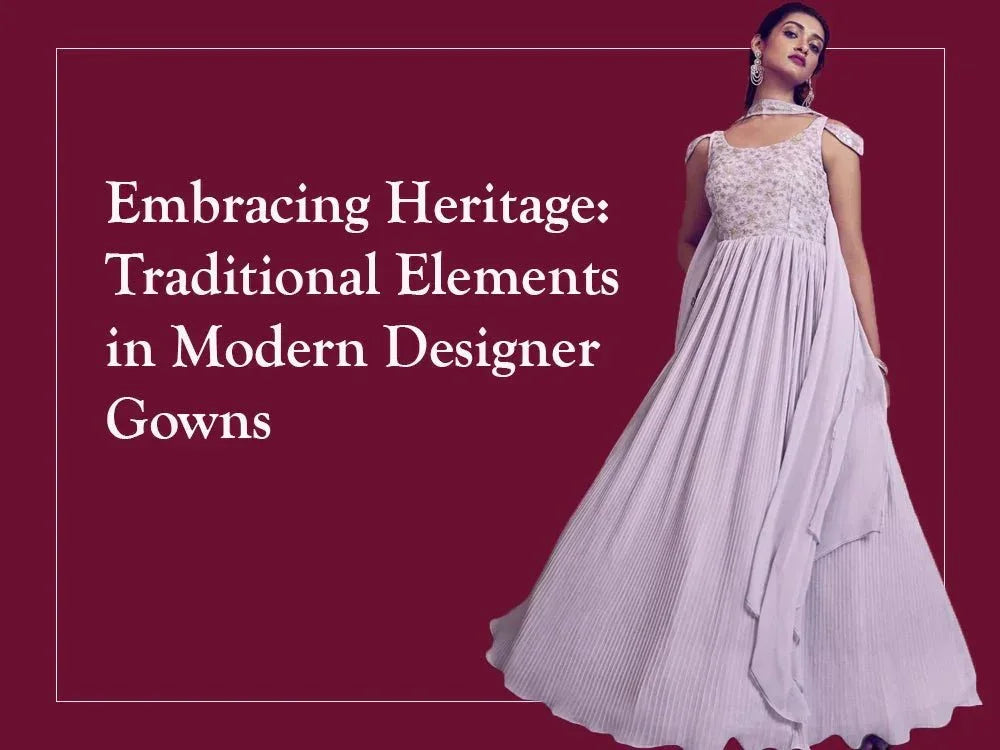A designer gown serves as an excellent example of the harmonious combination between tradition and modernity that fashion is an ever-evolving industry. In addition to highlighting the rich heritage of traditional craftsmanship, these exquisite creations incorporate innovative designs, materials, and techniques and exhibit a unique blend of traditional craftsmanship. Creating a bridge between tradition and modernity, designer gowns appeal to both classic and contemporary tastes. Stylish designer gowns capture the essence of timeless elegance while catering to the evolving tastes of today's fashion-conscious people.
Traditional Elements in Designer Gowns:

Designer gowns incorporate elements from different cultural backgrounds in an effort to pay homage to traditional aesthetics. These elements could include elaborate embroideries, delicate lacework, or elaborate motifs reminiscent of historical periods. A flowing silhouette of these gowns is often achieved through traditional fabrics such as silk, satin, and velvet, known for their luxurious feel. The classic silhouettes, such as A-lines, ballgowns, and mermaids, add an element of timeless elegance.
Modern Innovations in Designer Gowns:

A designer gown embraces modern innovations in its construction and design to stay current with contemporary trends. Traditional silhouettes are modernized by designers using unconventional materials such as neoprene, metallic fabrics, and laser-cut textiles. Various avant-garde techniques are employed to create unique patterns and designs, including printing and digital embroidery.
Modern designer gowns are often designed with comfort and functionality in mind. Incorporating hidden pockets, detachable elements, or adjustable features allows for added versatility and ease of use. Design choices of this nature cater to modern individuals who place a high value on style and practicality.
The Fusion of Tradition and Modernity:

A designer gown combines traditional and modern elements seamlessly, creating captivating creations that resonate with many audiences. One of the ways this fusion occurs is through the reinterpretation of classic styles. The traditional ballgown can, for example, be transformed with a plunging neckline or asymmetrical hemline, which infuses a contemporary touch into an otherwise timeless silhouette.
Design details are also blended with traditional craftsmanship when creating gowns. Combined with sleek, minimalist lines, intricate hand-beading or embroidery creates a striking contrast that enhances the gown's visual impact, creating a striking contrast. A fusion of the past and present, resulting in both nostalgic and forward-looking gowns, is a testament to the artistry of both eras.
A method for bridging the gap between tradition and modernity is to combine cultural influences. Designers draw inspiration from various traditions and incorporate elements from different cultures into their gowns, creating unique and visually appealing garments. Using Japanese origami folds and Indian zardozi embroidery, a designer might create a gown showcasing the cultural diversity's beauty.
Furthermore, designer gowns' color palette reflects the evolution of fashion. Modern gowns are often vibrant colors, metallic accents, or even bold prints, while traditional gowns were muted tones and earthy hues. A departure from convention gives the gowns new life, allowing them to appeal to a broader crowd.
Conclusion:
Stylish gowns at EthnicPlus Store show how tradition and modernity can be harmoniously merged. While catering to the evolving preferences of the modern individual, these gowns combine classical aesthetics with contemporary innovations to embody the spirit of timeless elegance. Designer gowns combine traditional elements with modern techniques and cultural influences, offering a sartorial experience that celebrates the beauty of tradition in a modern world.







